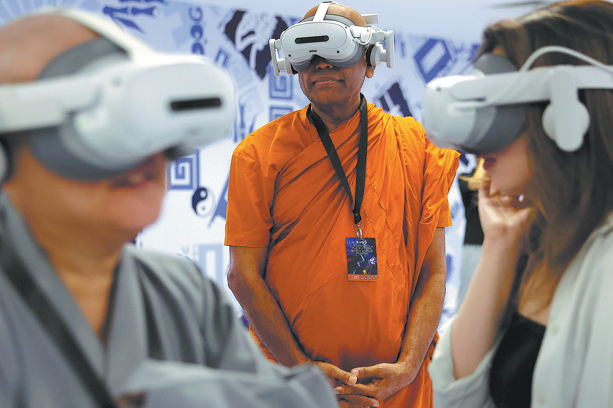Speed is the key for protection efforts
By Hou Liqiang | China Daily | Updated: 2017-06-19 07:29
When I was a little boy, my grandmother would tell me about her childhood memories of Spring Festival.

Apparently, it was a bustling time, and she was one of a crowd of children who ran here and there watching or participating in various traditional activities and staying up until the middle of the night.
I don't recall seeing any of these activities as a child, and it's impossible for me to learn more about them because grandma died in March. Following her funeral, my mother and my three uncles took me to visit my grandmother's sister-in-law, the last of my grandmother's generation in our family.
The four-all in their 60s-stopped for a while at the entrance to the village, recalling a memorial gateway. One of my uncles stretched his hands into the air and said its height was three or four times that of a grown adult.
The scene saddened me. I asked myself how many things have been lost from my grandmother's generation to my generation in my hometown in the east of Shandong province.
When I visited a number of traditional settlements in Yunnan province, including Shaxi, Zhoucheng and Xizhou, I was astonished to see that many of their traditional buildings and structures are well-preserved; and not just residential properties, but also temples dedicated to local religions, squares for traditional activities, stages for outdoor performances, defensive gate towers and ancient trading streets.
Even more exciting was the realization that many traditional activities are still held every year. One of them is Raosanling (a religious festival hosted by the Bai ethnic group) which falls in April, the fourth lunar month.
The activity is specifically for seniors, who dress in amusing outfits and spend two days singing and dancing while walking between three temples in Dali city.
It was exciting to see how many people are devoted to the protection of traditional villages-even though they face many challenges-and the government has attached great importance to the work.
I was moved by Zhu Liangwen, a retired professor of architecture at Kunming University of Science and Technology in Yunnan, because he is still contributing to the protection of traditional villages, even though he is 79.
However, I have to say the importance attached to the protection of traditional villages, which are important reservoirs of tradition and culture, is far from adequate because we are still failing to prevent them from fading away.
We can do nothing for those that have already gone, but we can do a lot for those that still exist but are endangered.
We will have to move fast, or, like me, a growing number of the younger generation will only have a vague idea of our rural culture and traditions.
























